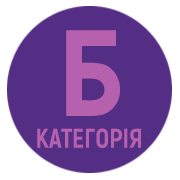USE OF ARTIFICIAL INTELLIGENCE IN EDUCATION OF CHILDREN WITH INTELLECTUAL DISABILITIES
DOI:
https://doi.org/10.32782/inclusion/2023.spec.7Keywords:
Artificial Intelligence, ChatGPT- applications, education of children with intellectual disabilities, correctional teachersAbstract
Artificial intelligence (hereinafter – AI) has rapidly entered all areas of our life, including science and education. The relevance of the problem requires relevant scientific research on the ways and possibilities of using ChatGPT-applications in the educational process. The article highlights the results of research on the identification of opportunities, problems, and shortcomings of using the ChatGPT application in the education of children with intellectual disabilities (hereinafter – children with ID). Research methods were: analysis of literary sources, survey of correctional teachers and conversation with AI. Despite the debate, scientists and practitioners speak in favor of using AI in education with a clear definition of its role as a virtual teacher's assistant. Researchers of this problem note that both teachers and children should be prepared to interact with ChatGPT. The survey of specialists proved that they are not against the use of ChatGPT applications in educational practice, but most of them are skeptical about independent work with them by students with ID. Also, teachers believe that both they and students are not sufficiently knowledgeable about interaction with AI. It was determined that AI can be used for: individualization of educational programs, adaptation and modification of tasks, visualization of the educational process, provision of additional information, support of formed skills, monitoring of learning effectiveness, development of communication skills and critical thinking skills. The problems of using AI include: lack of adaptation to the individual needs of the child, inability to take into account the specific characteristics of children with ID, lack of interaction with children, their emotional perception and flexibility, inaccuracy and irrelevance of answers, unpreparedness of teachers to use AI, children's lack of skills to work with ChatGPT - applications. AI will not replace a real teacher. Its use should be accompanied by the support and accompaniment of correctional teachers who are competent in the psychophysical characteristics of children with ID, know the specifics of teaching methods and means of correction.
References
Воронкін О.С. Технології штучного інтелекту в професійній діяльності педагога. URL: https://www.slideshare.net/AlexVoronkin/ss-258176428.
Мар’єнко М., Коваленко В. Штучний інтелект та відкрита наука в освіті. Фізико-математична освіта, 2023. Том 38. № 1. С. 48–53. URL: https://fmojournal.org/index.php/fmo/article/view/225.
Мірошнікова А. Штучний інтелект і вчитель – тандем майбутнього? URL: https://osvitoria.media/experience/shtuchnyj-intelekt-ta-vchytel-tandem-majbutnogo/.
Примаченко І. Штучний інтелект в освіті: можливості, виклики та перші кроки великої адаптації. URL: https://life.pravda.com.ua/columns/2023/08/4/255650/.
Терепищий С. Медіаграмотність в епоху штучного інтелекту: інтеграція інструментів і методів штучного інтелекту в сучасні педагогічні підходи. Актуальні питання гуманітарних наук. Вип. 60, том 4, 2023. С. 195–202.
Федина Ю. Як використати штучний інтелект в освіті. URL: https://oplatforma.com.ua/article/15878-yakvikoristati-shtuchniy-intelekt-v-osviti.







